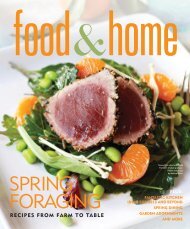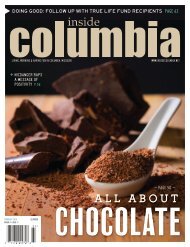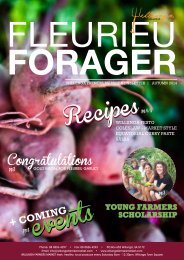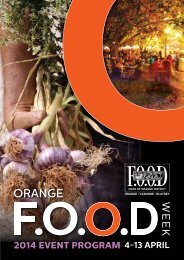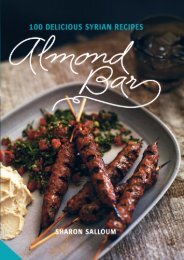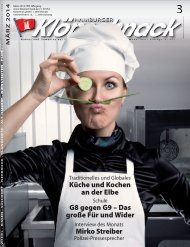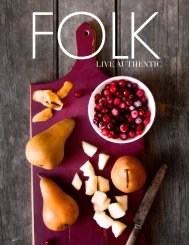Tasting Kitchen
Welcome to Tasting Kitchen. Season’s Greetings – or should I say Seasonings Greetings! This holiday TK issue is full of spices and flavorings. We talk to four talented and ambitious chefs about the flavor profile – or Flavor DNA – of dishes from India, Sichuan, Vietnam and the Isaan region of Thailand. Think cardamom, black salt and saffron, red peppercorns, red chilies and green chilies, dill, Kaffir lime, lemongrass, coriander, galangal and turmeric. We take a look at spices in history, and how even back in the Middle Ages savvy marketers knew the value of a good story. Spice merchants claimed that birds used cinnamon sticks to make giant nests in the cliffs above beaches in India, which “cinnamon hunters” then plotted to obtain. Today India is still associated with the world’s best spices. In this issue, for our first Tasting Destinations feature, TK’s Director of Photography David Hartung and Senior Writer Lucy Morgan traveled to Old Delhi to visit the world’s largest spice market and to New Delhi to visit one of the world’s top restaurants for modern Indian cuisine. One of our featured wines is the peppery Austrian Grüner Veltliner. We also talk to a New Zealand Wine Master about what makes great wine great, and to a leading French Champagne Chef de Cave about the value of patience and restraint. There are also some crabs running loose in the issue. A master chef in Macau shares his recipe for Quinoa Lobster Salad while five more from Hong Kong and Singapore share their favorite crab dishes and culinary musings. Happy Holidays,
Welcome to Tasting Kitchen.
Season’s Greetings – or should I say
Seasonings Greetings!
This holiday TK issue is full of spices and
flavorings.
We talk to four talented and ambitious
chefs about the flavor profile – or Flavor DNA
– of dishes from India, Sichuan, Vietnam and
the Isaan region of Thailand. Think cardamom,
black salt and saffron, red peppercorns, red
chilies and green chilies, dill, Kaffir lime,
lemongrass, coriander, galangal and turmeric.
We take a look at spices in history, and
how even back in the Middle Ages savvy marketers knew the value of a good story.
Spice merchants claimed that birds used cinnamon sticks to make giant nests in the
cliffs above beaches in India, which “cinnamon hunters” then plotted to obtain.
Today India is still associated with the world’s best spices. In this issue, for
our first Tasting Destinations feature, TK’s Director of Photography David Hartung
and Senior Writer Lucy Morgan traveled to Old Delhi to visit the world’s largest
spice market and to New Delhi to visit one of the world’s top restaurants for modern
Indian cuisine.
One of our featured wines is the peppery Austrian Grüner Veltliner. We also
talk to a New Zealand Wine Master about what makes great wine great, and to a
leading French Champagne Chef de Cave about the value of patience and restraint.
There are also some crabs running loose in the issue. A master chef in Macau
shares his recipe for Quinoa Lobster Salad while five more from Hong Kong and
Singapore share their favorite crab dishes and culinary musings.
Happy Holidays,
Create successful ePaper yourself
Turn your PDF publications into a flip-book with our unique Google optimized e-Paper software.
wine masters<br />
Tell us about the 2004 vintage.<br />
All these vintages are so different –<br />
pure expressions of the seasons, of Mother<br />
Nature. Creating a wine is a balancing act<br />
between what comes from the venue and<br />
the vintage.<br />
The 2003 vintage was plumper, more<br />
ample. It almost had a still wine quality, a<br />
glorious golden white Burgundian character.<br />
But in ‘04 we are back to the classics – that’s<br />
the perception of the outside. It’s very elegant<br />
– I am suspicious of the term elegant<br />
because it is sometimes used to hide something<br />
that is lightweight – but this is not. It<br />
is truly elegant.<br />
How does Dom Pérignon work with<br />
food?<br />
I think Dom Pérignon has that special<br />
capacity to make it through an entire meal. I<br />
think there is a sort of harmony and embracing<br />
quality and flux in the wine that can raise<br />
itself to any challenge. Even the most gentle<br />
vintage. When the wine is on such a scheme<br />
of harmony it has that flux to adapt.<br />
How about with Chinese food, served<br />
family style with its complex and varied<br />
flavors?<br />
You can start off with very gentle flavors<br />
but the same wine can move on – from Cantonese<br />
to Sichuan. The wine adjusts with<br />
each flavor. So the wine remains at the level<br />
– it doesn’t impose itself, it is always on a<br />
par, never above. We served one vintage,<br />
1999, at a dinner that started with oysters<br />
and finished with a chocolate dessert. This<br />
one could do well with Chinese food. The<br />
full-bodied 2003 could definitely work, even<br />
with heat and spice.<br />
How do you make it like that?<br />
The way Dom Pérignon is blended<br />
together, opposing the two grape varieties<br />
Chardonnay and Pinot Noir – it’s yin and<br />
yang leading to harmony. Something which<br />
has always appealed to me, I adjust it every<br />
year – there is balance. It is never the same.<br />
You can never replicate. You have to recreate<br />
and the whole blending process is driven<br />
by taste.<br />
Which specific bottles would you recommend<br />
with a Chinese meal?<br />
COURTESY OF DOM PÉRIGNON<br />
152<br />
| TK | flavor dna




